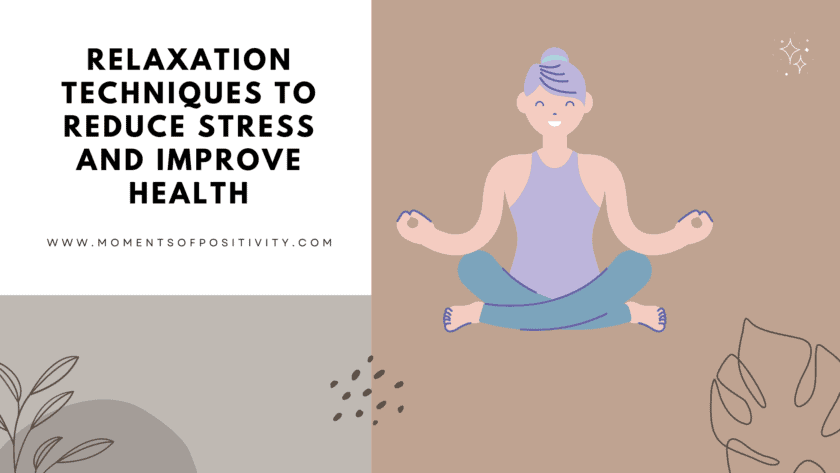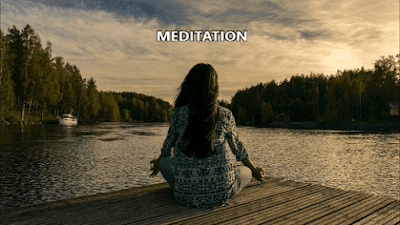Share this
Relaxation techniques are a great way to help with stress management. Relaxation isn’t only about peace of mind or enjoying a hobby. Relaxation is a process that decreases the effects of stress on your mind and body. Relaxation techniques can help you cope with everyday stress and with stress related to various health problems, such as heart disease and pain. If practiced regularly, can produce a positive physiological response and help counter stress. These techniques are most effective when accompanied by regular exercise, a nutritious diet, and a positive mental attitude.
Yoga
The literal translation for yoga means the connection between mind, spirit, and body. It is a system of exercises or poses (asanas), breathing techniques (pranayamas), and meditation used to attain bodily and mental control for well-being. Physiologically, it benefits the nervous and respiratory systems and decreases the symptoms of many ailments including allergies, stress, depression, and anxiety. The psychology of yoga provides many techniques for resolving conflicts, adapting to change, exploring alternatives, and working things out in a calm, objective manner. And, although it is not used so much in western practices, spirituality has traditionally been an underlying theme amongst yoga practitioners.
Yoga, although not a fat-burning exercise, boasts the following benefits:
- Increases flexibility, strength, energy and agility
- Improves posture and balance
- Assist in digestion and elimination
- Improves sleep
- Boosts the immune system
- Reduces stress and depression
- Improves concentration and memory
Meditation
Anyone who has ever practiced meditation can tell you of the many benefits it offers. Meditation may improve health by lowering blood pressure, easing insomnia, reducing stress and improving memory. Many women claim that they feel younger, happier, and more alert from meditating.
The following is a basic meditation that can be practiced for just a few minutes as a recharge during the day or for up to 20 minutes for complete relaxation.
- Find a quiet and comfortable place to sit.
- You can either close your eyes or just let your eyes drop to where they are comfortable and allow them to gaze, without focusing on anything.
- Focus on your breathing for 30 seconds or so. Allow the air to enter through your nose and leave through your mouth.
- Relax your muscles, starting with your facial muscles and work your way down your neck, through your limbs and trunk and to your toes.
- Become aware of your thoughts. If you are feeling stress or anxiety, take 3 or 4 deep inhalations, hold them for 10 seconds and with each exhalation, try to let go of the emotion.
- Once you feel calm, picture a peaceful setting like a beach, the wilderness or a lake. See yourself there, content in this setting. Stay there for a moment.
- Gradually allow your attention to return to your surroundings and open your eyes.
Note: It is common, especially if you are new to meditation, to find your thoughts wandering in different directions or focusing on a sound in your environment. Try putting on some relaxing music or gently bring your thoughts back to your meditation focal point.
Massage
Massage is the manipulation of soft body tissue with the hands, fingers, elbows and/or feet by rubbing or kneading movements. Massage can be applied by a qualified massage therapist, layperson or by yourself. Try using aromatic essential oils to enhance the experience.
Aromatherapy
Aromatherapy comprises highly concentrated aromatic oils that are distilled from different plants, fruits, wood and roots and then mixed with carrier oils which comprise pure vegetable oils such as almond or grapeseed oil. For centuries people have derived therapeutic enjoys aromatherapy to both their physical and psychological wellbeing. For maximum benefit, ensure that the essential oils you purchase contain no chemical or artificial ingredients.
Relaxation Breathing
Relaxation Breathing is also called the “1:4:2: Ratio”. This technique can be used to provide the concentration or balance you need during a stressful or tiring situation.
- Find a place where you can be on your own for a few moments.
- Breathe by inhaling through your nose and out through your mouth.
- Inhale deeply and count as you do so, 1….2…..3… . Most people can inhale to a count of between 7 and 10.
- Whatever you were able to count to during inhalation, multiply it by 4, holding your breath as you count to that number. So if you inhaled to a count of 8, hold your breath for a count to 32.
- Exhale by doubling your inhalation count. Again, if you inhaled to a count of 8, exhale while counting to 16.
- Repeat this 3-5 times. This should provide you with a sense of calmness and improved concentration.
As an alternative, try to breathe easier, breathe deeper with 4 Minute Fitness

Acupuncture
Acupuncture is an ancient Chinese form of medicine, dating back some 5,000 years. It is used to provide relief from conditions such as backache, eczema, arthritis, and asthma, just to name a few.
Acupuncturists use very fine needles that poke the skin at specific points on the body, thereby enabling energy or “qi” to flow easily. Qi moves along 14 vertical pathways in the body and, if left obstructed or unbalanced, the illness will set in.
Electro-Acupuncture is a modern version of acupuncture in which tiny electrical impulses sent through the acupuncture needles are used for pain relief. Other modern methods for stimulating acupuncture points include using lasers, sound waves (sonopuncture), auricular (ear) acupuncture and moxibustion (heat from specific herbs applies to acupuncture points). Another method widely used today is acupressure where fingers, instead of needles apply pressure to specific points. This is an effective way to treat many of the internal organs of the body.
Biofeedback
Psychophysiology is the study of the mind-body connection, such as the changes that occur to the body when a person experiences particular thoughts or emotions.
Biofeedback is a technique used in psychophysiology where a psychophysiologist trains a person to alter their brain activity, blood pressure, muscle tension, heart rate or other bodily functions by being “fed back” information about what was occurring in their bodies in either a visual or audible way. For example, an electroencephalograph (EEG) can pick up electrical signals from contracting muscles, which then activates a particular sound or a flashing light. To reduce this muscle tension or to relax, the person must mentally try to slow the frequency of sounds or flashes. Once they are able to associate their muscle contractions with their tension levels, they can control the length and degree of tension without being having to be attached to the biofeedback sensors.
Remember that relaxation techniques are skills. As with any skill, your ability to relax improves with practice. Be patient with yourself. Don’t let your effort to practice relaxation techniques become yet another stressor.





Meditation, Massage, taking supplements for stress are the most effective for reducing stress. I tried meditation and it works well. Thanks for sharing these techniques.